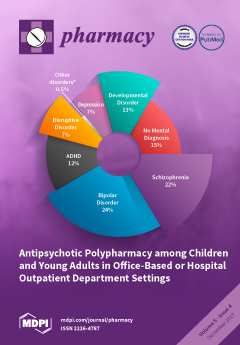Open AccessArticle
Hospital Audit as a Useful Tool in the Process of Introducing Falsified Medicines Directive (FMD) into Hospital Pharmacy Settings—A Pilot Study
by
Urszula Religioni, Damian Swieczkowski, Anna Gawrońska, Anna Kowalczuk, Mariola Drozd, Mikołaj Zerhau, Dariusz Smoliński, Stanisław Radomiński, Natalia Cwalina, David Brindley, Miłosz J. Jaguszewski and Piotr Merks
Cited by 4 | Viewed by 3981
Abstract
Background: Recently, the European Union has introduced the Falsified Medicines Directive (FMD). Additionally, in early 2016, a Delegated Act (DA) related to the FMD was published. The main objective of this study was to evaluate the usefulness of external audits in the context
[...] Read more.
Background: Recently, the European Union has introduced the Falsified Medicines Directive (FMD). Additionally, in early 2016, a Delegated Act (DA) related to the FMD was published. The main objective of this study was to evaluate the usefulness of external audits in the context of implementing new regulations provided by the FMD in the secondary care environment. Methods: The external, in-person workflow audits were performed by an authentication company in three Polish hospital pharmacies. Each audit consisted of a combination of supervision (non-participant observation), secondary data analysis, and expert interviews with the use of an independently designed authorial Diagnostic Questionnaire. The questionnaire included information about hospital drug distribution procedures, data concerning drug usage, IT systems, medication order systems, the processes of medication dispensing, and the preparation and administration of hazardous drugs. Data analysis included a thorough examination of hospital documentation in regard to drug management. All data were subjected to qualitative analysis, with the aim of generating meaningful information through inductive inference. Results: Only one dispensing location in the Polish hospitals studied has the potential to be a primary authentication area. In the audited hospitals, an Automated Drug Dispensing System and unit dose were not identified during the study. Hospital wards contained an enclosed place within the department dedicated to drug storage under the direct supervision of senior nursing staff. An electronic order system was not available. In the largest center, unused medications are re-dispensed to different hospital departments, or may be sold to various institutions. Additionally, in one hospital pharmacy, pharmacists prepared parenteral nutrition and chemotherapeutic drugs for patients admitted to the hospital. Conclusions: External audits might prove beneficial in the course of introducing new regulations into everyday settings. However, such action should be provided before the final implementation of authentication services. To sum up, FMD can impact several hospital departments.
Full article





